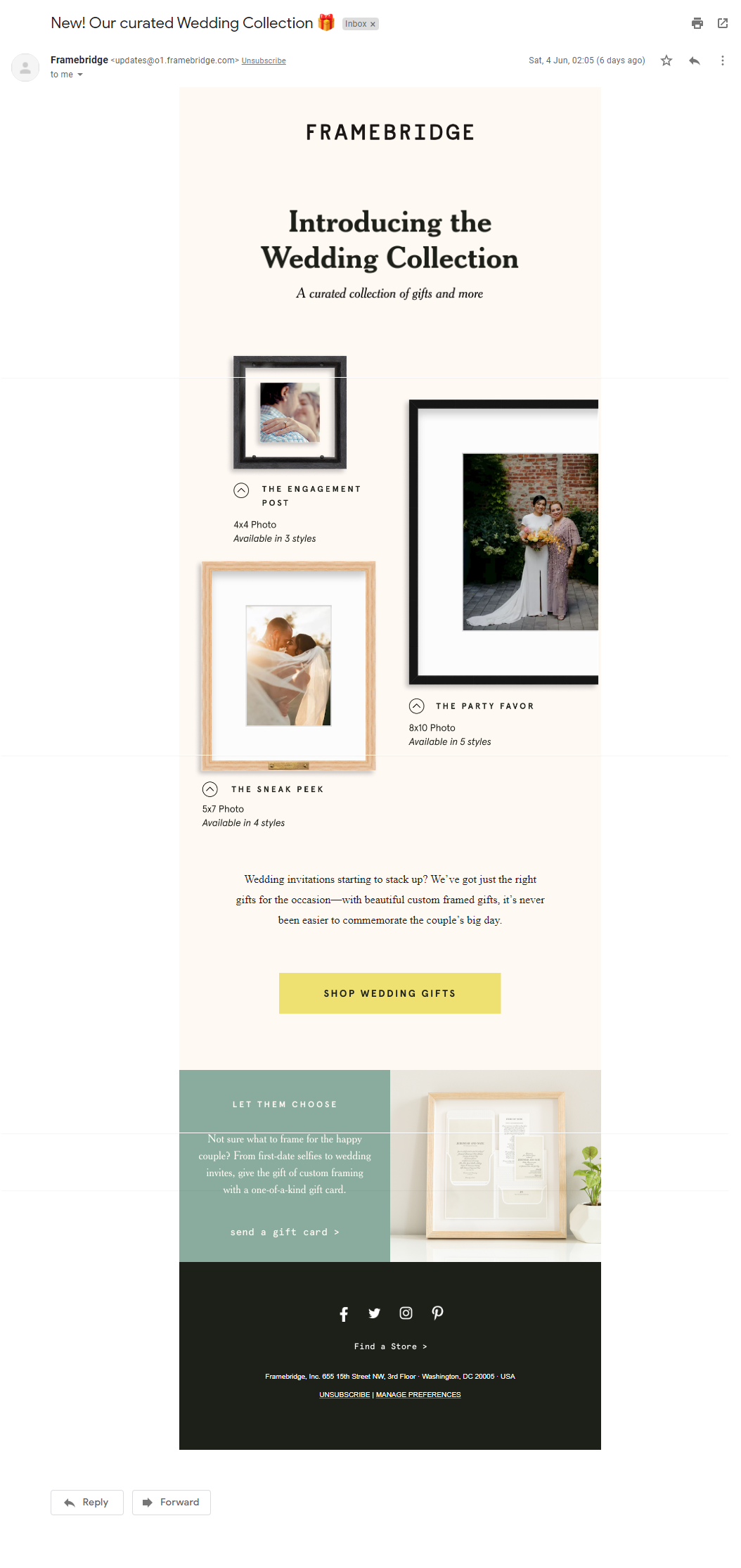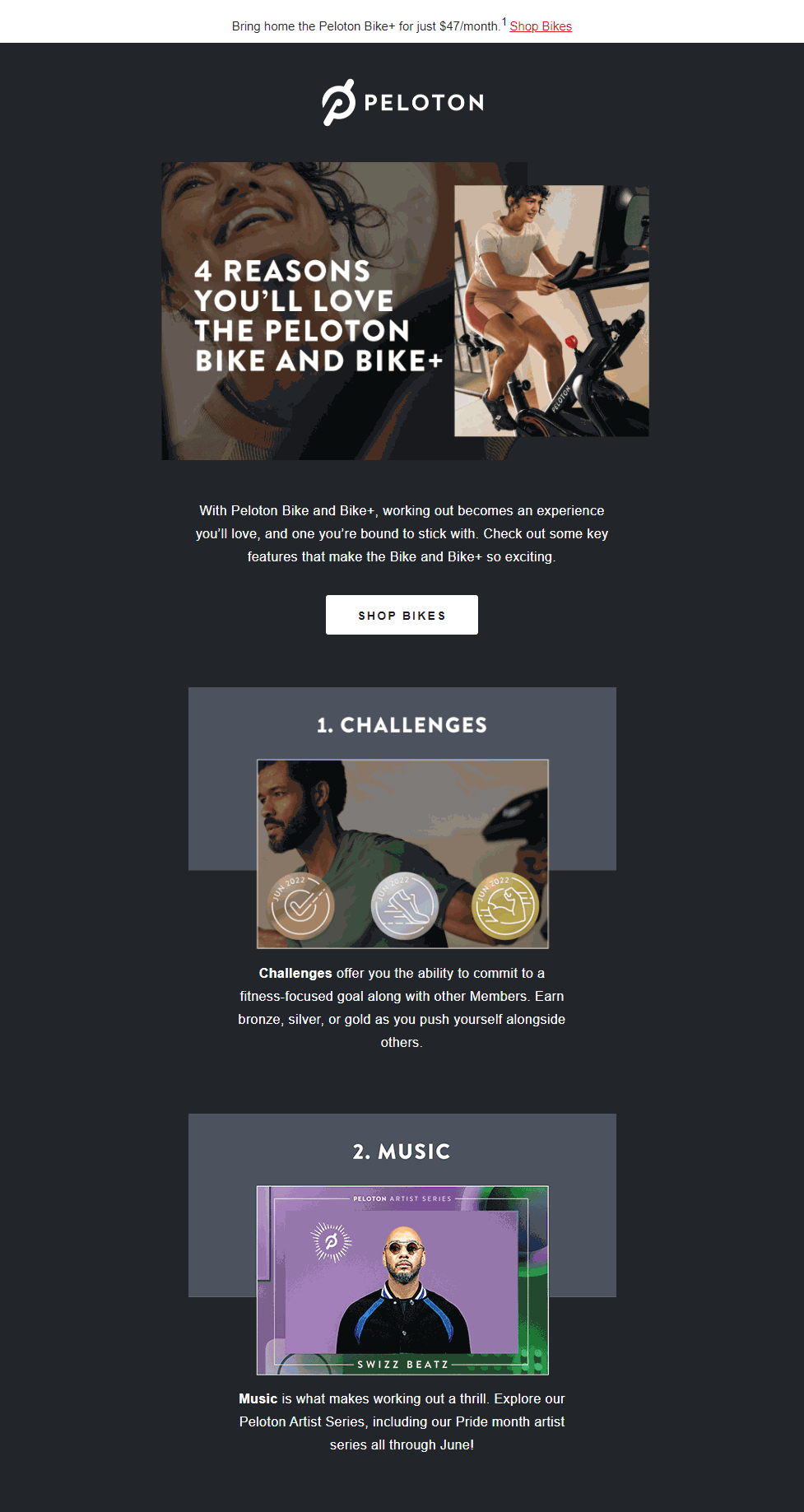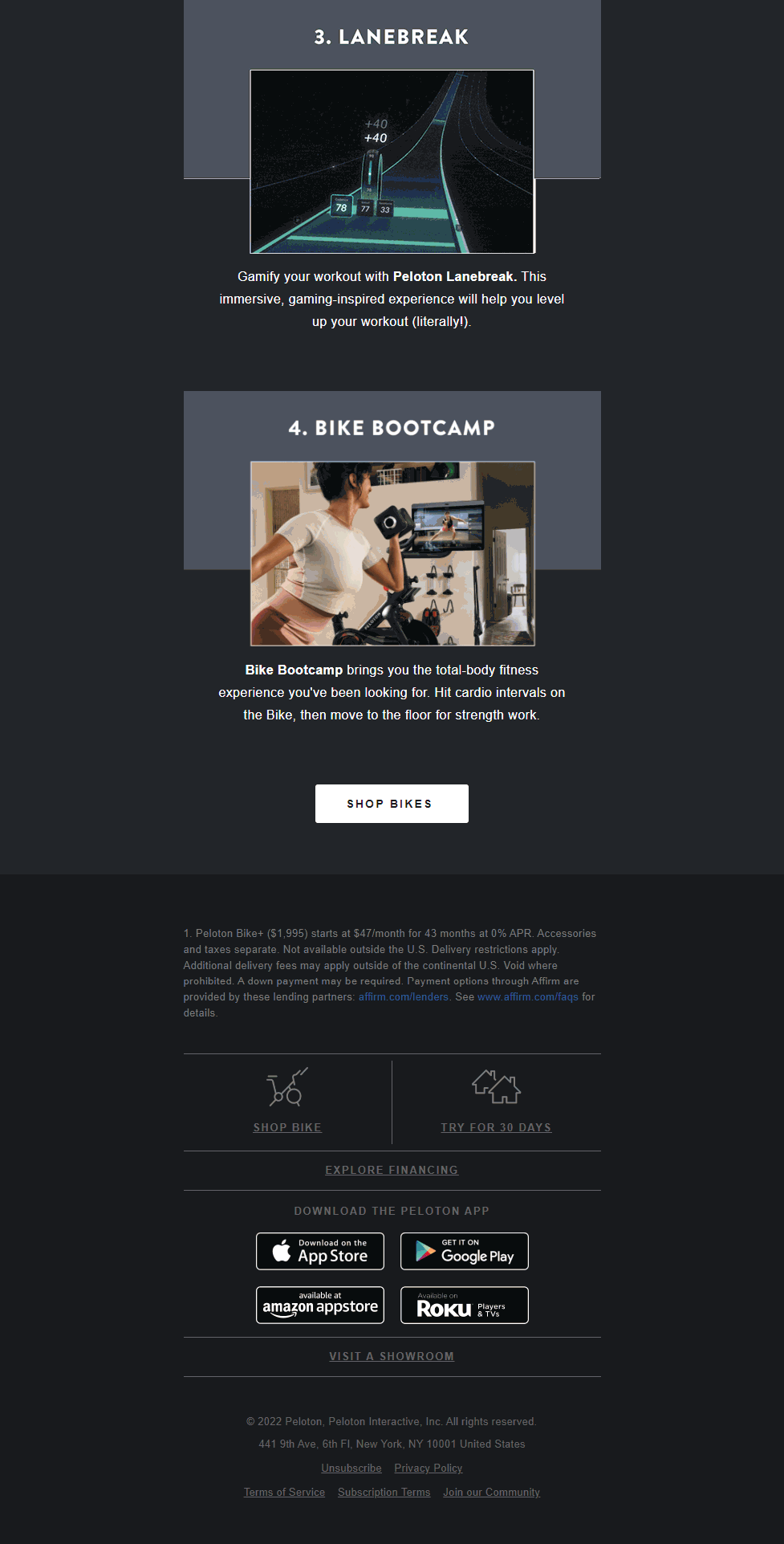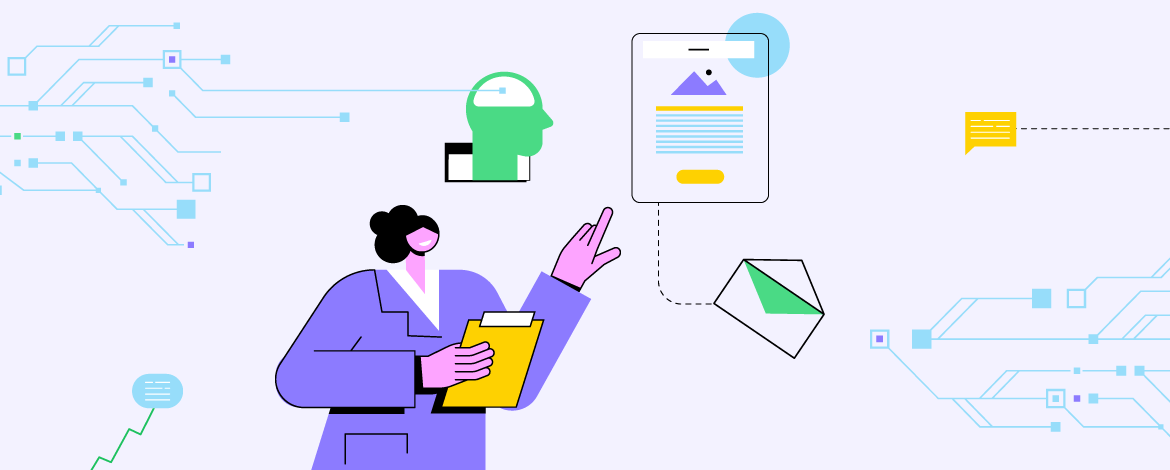The email marketing community is no stranger to Artificial Intelligence. From refining personalization strategies to optimizing email timing and frequency, marketers have a lot to thank AI for. Of late, however, a specific AI use case has invited a lot of chatter, leaving the community fairly divided in the process- email copywriting.
On the one hand, there’s tangible excitement about the possibility of churning out massive volumes of content at breakneck speed, while on the other, there’s genuine doubt regarding the nuance of said content. As we speak, many brands out there are already using AI-powered models to generate new content ideas for their various platforms, even AI resume writers. But, nobody has yet relied on AI to write full-blown content pieces. Human intervention is regarded as paramount (for the moment, at least). The question is, how far are businesses from making that leap, really? To hand over their email copywriting responsibilities, hook, line, and sinker, to AI?
To answer that, we first need to understand the pros and cons associated with writing email copy. Let’s dive in, shall we?
The Benefits
Writing your email copy with artificial intelligence can brighten the fortunes of your email campaign in many ways. The topics listed below illustrate how.
Improved Quality
Come to think of it, AI copy is basically text generated with the help of natural language processing tools. You need to feed a set of parameters to your machine depending on the length and nature of the email you are writing. With your directions at its disposal, the system then proceeds to analyze matching content already present on the web. At the end of this scanning, you get your copy. Keep in mind that the machine creates this content after having processed almost millions and millions of email copies on the internet. Therefore, you have an extremely good shot at obtaining high-quality copy by making use of artificial intelligence. However, the internet is rife with both good and bad copies. And the machine will be consuming them all. This means, that the probability of you obtaining a subpar copy isn’t that low either.
So, how do you judge whether the copy generated by your AI tool is impactful or not? By ensuring that it abides by certain characteristics.
Wondering what the characteristics of an impactful email copy are? Take a look.
- Your email copy should always be crisp and to the point. Remember, you are not the only entity mailing your target audience. Their inboxes are bombarded by several emails from your competitors too. So, how do you come up trumps? By infusing brevity into your email copies. On any given day, your subscribers would rather prefer to engage with an email that has a concise copy over one that extends the length of a novella (okay, we might have exaggerated a touch there, but you get the point, don’t you?) Besides, the average consumer attention span in 2022 stands at 8 seconds. That’s definitely a compelling reason to keep your copy short and sweet, isn’t it? Most importantly, a brief copy helps make your emails accessible. Individuals using assistive technologies such as screen readers might have trouble inferring the key aspects of your message should your copy be lengthy.
Take a look at this email by Kate Spade for instance.

- Keep your lines short and simple. Facilitating readability should be among your topmost priorities while drafting your email copy. Steer clear of long and winding sentences. They can greatly discourage your readers from interacting with your content. Additionally, always be conscious of your word choice; make certain that it is accessible to a broad spectrum of your target audience.
This email from Framebridge is an excellent illustration of what we are talking about.

- If you are using hyperlink text in your email copy, make them descriptive to a fault. If your link is going to lead them to a blog page about writing successful email copy, let your anchor text read “Read our guide to winning email copy” rather than “Click Here.”
- Avoid jargon like the plague. Imagine trying to read an email from your favorite brand only to be thrown off by jargon peppered all through the email copy. You wouldn’t really look forward to your future communications, would you? Companies operating in the B2B and SaaS domains typically tend to use a lot of industry jargon in their emails. As a result, the readability of their communication suffers. Such businesses deal with extremely complicated products due to which they deem using technical language necessary.
Sure, a term here or there is unavoidable, we understand. However, if your entire copy reads as if it’s an entry from a peer-reviewed scientific journal, you will never be able to invite sufficient engagement and interaction. The best course of action is to think from a customer’s perspective. Say you are dealing with solar panels. What would a prospective customer want to know from you? The charging duration of the panel, the amount of energy it can generate, the appliances it can power, and its cost. Hence, your copy should revolve entirely around these aspects. Other information, such as the chemical composition of the cells comprising the panel, is completely irrelevant to them and should be omitted from your email copy.
Here’s an email from Invision that aptly summarises what we just talked about.

- Always make the copy about your customer. Nothing puts people off more than brands that incessantly toot their horns in their communications. The objective of your email copy should always be to establish a personal connect with your readers. To achieve this, you have many tricks in your heart. To begin with, try writing your copy in the second person. This will help make your email’s tone conversational. While talking about the salient feature of a product or service, explain how it addresses a specific pain point of your customers rather than rambling about its virtue in and of itself.
For example, take a look at this email by Peloton.


This way, by introducing a little bit of human moderation, you can gather absolutely top-notch copy from your AI writing tool.
Impactful Subject Lines and Preheaders
An email’s subject line and preheader text are the first things a reader notices about it. If they are unable to attract your subscriber’s attention, your emails are most likely to go unopened. Now, the ideal subject line and preheader are tough nuts to crack. Not only do you have to abide by all the best practices, but you also gauge how your audience is responding to it. Hence, to maximize your chances of success, you should come up with several subject lines and preheaders for a single email, test them all with your audience, and choose the best one accordingly. That said, coming up with scores and hundreds of options is no walk in the park either, except if you are an AI writing tool. They can generate multiple subject lines and preheaders in a breeze, making matters incredibly convenient for you.
Never Miss a Beat with Personalization
In this age of email fatigue, to cut through the noise, sending personalized messages to your audience is the only way forward- you know this, we know this, every email marketer knows this. So, if this is such common knowledge, why do brands still struggle to execute personalization to perfection. Well, in most cases, the main culprit is a resource crunch, something that an AI writing tool can help you address. You see, when you have an extensive contact list, you will obviously have a great number of unique customer segments (divided based on many parameters such as age, gender, occupation, past purchases, position in the sales funnel, and the like).
Now, writing personalized emails for all of them is a massive task, even with the services of email automation and a decent-sized team. And the job doesn’t end with sending emails. You must also brace yourself for their replies, ensuring that you revert with the same tone. Sounds rather stiff, doesn’t it? This situation becomes much more manageable when you have an AI writing tool on deck. From sending personalized emails corresponding to every segment’s individual buying persona to mirroring the customer’s tone while reverting, it can take care of it all for you.
Channelize Time in Other Directions
Email copywriting takes a substantial amount of time during the design of an email campaign. Goes without saying, if an AI tool deals with it end to end, you will have a lot of time on your hands, which you can then divert to other aspects of your campaign. For starters, you can focus on dialing up the visual appeal of your email template. Your email design goes a long way toward consolidating your reach and visibility. Content that is compelling and exciting will go unnoticed if it is not married to an equally magnetic visual layout. Likewise, you will also have the room to spend more time on improving your deliverability and performance measurement.
The Drawbacks
At its core, the copy AI generates is simply a replica of all the various copies it scans on the web. Simply put, this copy isn’t really a conscious creation but rather an imitation of what the model has consumed before. And therein lies its biggest drawback.
Lacks a Human Touch
AI copy is often devoid of empathy, creativity, and context- elements that lend life to a piece of context. That way, if such a copy is used as it is without subjecting it to human intervention, it might fail to evoke any feelings or sentiments from your readers.
Not Free From Errors
While AI copy is, obviously, free from human errors, it is not bereft of the mistakes that might have crept in while designing the AI model in the first place. If left undetected, it can greatly affect the quality and reliability of the copy it creates. Even text written by the most sophisticated AI writing tools at present contains quite a few grammatical and structural errors. So it is always recommended to edit such copy prior to using it.
Doesn’t Have Intuition
How often have you changed a perfectly well-written and appealing copy at the last minute simply because it felt inappropriate for the situation AND proven right eventually? What was the driving factor behind taking this call? Your gut and intuition. An AI model would never be able to take such calls.
AI Writing Tools You Can Consider Using
- Copy.ai: Used by a deluge of top brands out there including Microsoft, Nestle, and Ogilvy, Copy.ai is a powerful AI content generator that is making lives easier for blog writers, social media managers, and email marketers alike.
- Wordtune: With Wordtune, you can iron out the wrinkles in your existing content piece, increasing its tone, flow, and readability by leaps and bounds. Wordtune is not exactly a copy generator but more of a word processing tool.
- Copysmith: From generating ideas to rewriting content to crafting product descriptions—Copysmith’s extensive suite of features enables you to effortlessly scale up your eCommerce business. There are several ai tools for ecommerce business that support these tasks, making automation and growth easier than ever.
- Wordsmith: Using Wordsmith, you can process large data sets into meaningful content narratives. This tool comes in particularly handy with respect to financial reporting.
- Writesonic: Writesonic doesn’t just enable you to come up with top-tier copy but also helps in amping up your website’s SEO, driving increased traffic in the process.
Wrapping It Up
As we can infer from the arguments stated above, though there is a lot to be gained from writing email copy using AI, setting the whole arrangement to autopilot is rather infeasible in the current scheme of things. Nobody knows what might be possible a few years down the line, but at the moment, marrying top-tier tech with top-notch talent is the only surefire formula to creating successful email campaigns.




Rohan Kar
Latest posts by Rohan Kar (see all)
Top 5 Reasons to Outsource SFMC Implementation to a Dedicated Partner
Email Inspirations To Get Your Ball Rolling For The Back To School Season